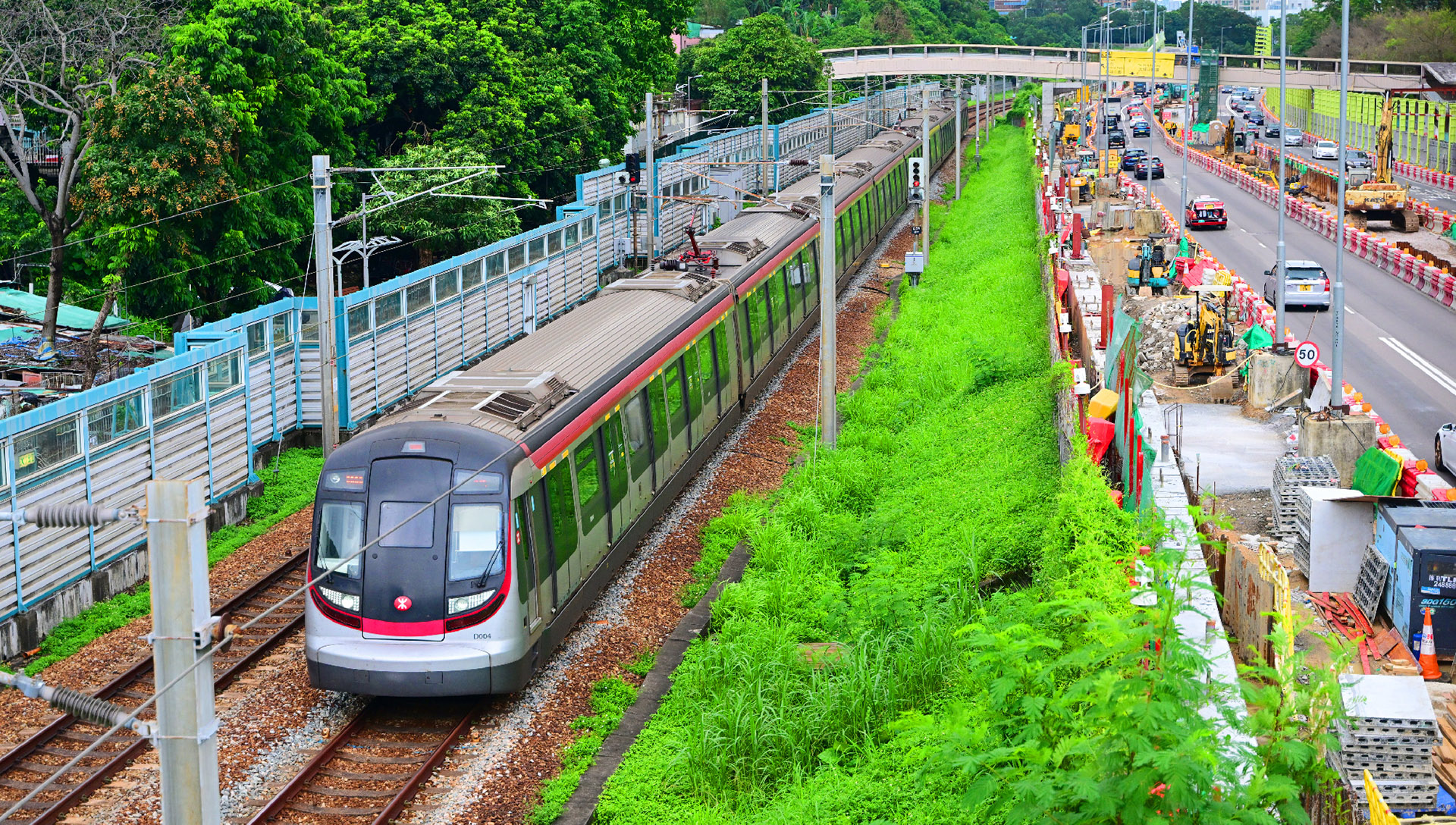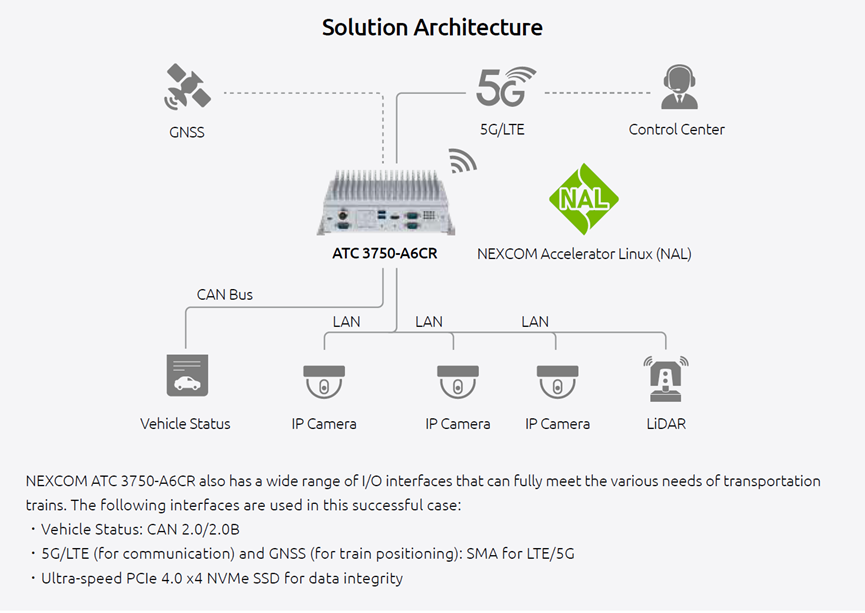Enhancing Railway Safety with AI-Powered Smart Transportation Solution

Background
Hong Kong’ s primary public transportation network, the MTR, boasts a comprehensive railway system with 12 light-rail and 10 medium- to heavy-rail lines, totaling 167 stations. It has operated since 2007. With a nearly 20-year history, the MTR surpassed 1.3 billion cumulative passengers in 2022 , solidifying its status as one of the world’s busiest railway systems. The regular maintenance of this extensive network poses a significant challenge for the MTR Corporation.
Challenge
All types of transportation infrastructure, including highways, railways, and subways, have one thing in common: they face critical challenges in operationalizing data across safety, maintenance efficiency, and always-on security. Maximizing safety while minimizing maintenance costs is a massive challenge for any transit authority, particularly for MTR - whose maintenance costs can reach in excess of 65 billion in the next five years on railway asset maintenance.
In particular, let’s delve into operational safety. Manual inspections can take up to 10 times longer than machine inspections; it is both labor intensive and compromises accuracy.
Inclement weather conditions, such as wind, rain, and darkness, can further complicate manual inspections. Extreme precipitation events have become more frequent in Hong Kong. The hourly rainfall record was broken several times in the last few decades. In consequence, the inspections often fail to monitor the safety of operating tracks. For instance, vegetation intrusion or railway tracks shift, leading to derailments. Hundreds of incidents occur annually due to undetected infrastructure defects, vegetation and landslides. Unplanned disruptions result in an average of 300 hours of operations lost per year across these sectors.
Traditional camera infrastructure and IP cameras often lack depth perception for accurate monitoring. Satellite imagery doesn’t have enough precision and is highly dependent on weather and satellite availability. Aerial monitoring is costly, with airspace regulation issues and the requirement for experienced pilots.
Are there any other ways to address these issues using modern technology?
Solutions
Advanced computing and AI is the path forward, covering tasks from image processing and optimization to machine and deep learning, as well as machine vision and object recognition for safety applications, including collision avoidance. NEXCOM, using spatial sensing software, assisted the Hong Kong MTR in installing an AI monitoring system. Its product, ATC 3750 -A6CR, a robust edge AI railway computer featuring the NVIDIA Jetson AGX Orin system-on-module, connects high-resolution cameras and LiDAR by PoE LAN ports as the image inputs for machine vision.

Additionally, NEXCOM offers a comprehensive software service called NEXCOM Accelerator Linux (NAL), integrating the NVIDIA JetPack 5.1.1 software development kit, Ubuntu 20.04, an onboard MCU Library, and custom-made peripheral I/O functionality drivers. It provides developers with efficient control of the hardware and NVIDIA Jetson system-on-modules through APIs, sample code, and I/O utility, facilitating a seamless solution to accelerate customers’ APP developments. The stable software architecture of NAL made it easy for software vendors to extract train information and develop programs, allowing their software to successfully interface with the ATC 3750 and meet the requirements of this project.
This AI monitoring system, called Intelligent Railway Infrastructure System (IRIS), is powered by SpatialSense. The LiDAR and processing device are installed on the train, surveying the railway infrastructure, capturing precise details, and forming a digital twin. The software analyzes the railway circuit and helps to identify potential concerns, such as intrusions, obstacles, or the growth of trees that can cause visual blind spots near the tracks. The exact location of potentially hazardous instances is pinpointed directly on the 3D map in an intuitive web application. Staff from the control center can view the alert in real time and immediately rectify the risk, such as by removing trees or repairing rails. This solution can also be used by railway operators to schedule maintenance and troubleshoot problems, helping to prevent accidents.
4 Steps of how Intelligent Railway Infrastructure System (IRIS)works
works.jpg)
Moreover, this mobile computer facilitates real-time information monitoring by integrating LiDARs, IP cameras, or mmWave radar. It provides essential functionalities such as driving and braking control, collision protection, people counting, traffic light detection, railway ballast bed monitoring, railway station monitoring, and anonymized monitoring of drivers’ physiological states. These features aim to enhance safety in rolling stock applications.
The railway SKUs for ATC 3750 -A6CR, along with the optional power isolation kit VTK PWA series, provide complete power protection. They hold the EN 50155 certification and are equipped with an M12 X-coded connector to prevent wire detachment. In such a complex environment that’s exposed to natural elements, a ruggedized solution is required. Equipped with passive cooling and an optional fan kit for hybrid cooling, the ATC 3750-A6CR can effectively dissipate heat over a wide temperature range in harsh environments. These features enable high-speed data processing, efficient operations, and excellent connectivity, facilitating real-time obstacle detection for collision avoidance. NEXCOM plays a crucial role in unfenced environments by detecting and eliminating blind spots, where unexpected obstacles like animals or plants may enter, minimizing accidents, damages, deaths, and delays while maintaining transportation volume and revenue.
Benefit & Result
‧ Improved Inspection Efficiency
By employing the AI solution, the public transportation network can reduce the impact of uncontrollable factors such as weather and labor shortages, significantly lowering costs and improving inspection efficiency.
‧ Improved Prediction Accuracy
Compared to traditional optical sensors, LiDAR can accurately detect the distance, location, and shape of objects, collecting data from a wider range by emitting lasers in all directions. In this case, it is crucial to effectively and accurately identify the location of trees and whether surrounding objects will obstruct the train’s path.
‧ Reduced Maintenance Costs
According to the reports by the public transportation network and the Federal Railroad Administration, Hong Kong will spend $65 billion on railway asset maintenance and renewal in the next five years. By switching from breakdown maintenance to preventive maintenance, the AI monitoring solution enables saving a lot of costs.
The smart transportation solution, built using NEXCOM’s ATC 3750 -A6CR and Intelligent Railway Infrastructure System (IRIS), is a game-changing platform revolutionizing the transportation industry. The platform provides efficient, cost-effective, and safe solutions, and has been widely adopted across numerous vertical markets. It contributes to new standards for innovation and technological advancement in the transportation sector.

- Related Links:
- NEXCOM Showcases Safe Humanoid Robot Controller, and unveils Slim AI-Ready Panel PC and Rugged Edge Solutions at Embedded World 2025
- NEXCOM at Embedded World North America 2025: Unleashing the Ingenuity of SD Edge Computing
- Browse Other News:
- The NDiS B562: Powering Precision in Edge AI and AOI Applications
- Enhancing Logistics Efficiency with NDiS B561 Integrated Dimensioning Solution
- All Case Study News
